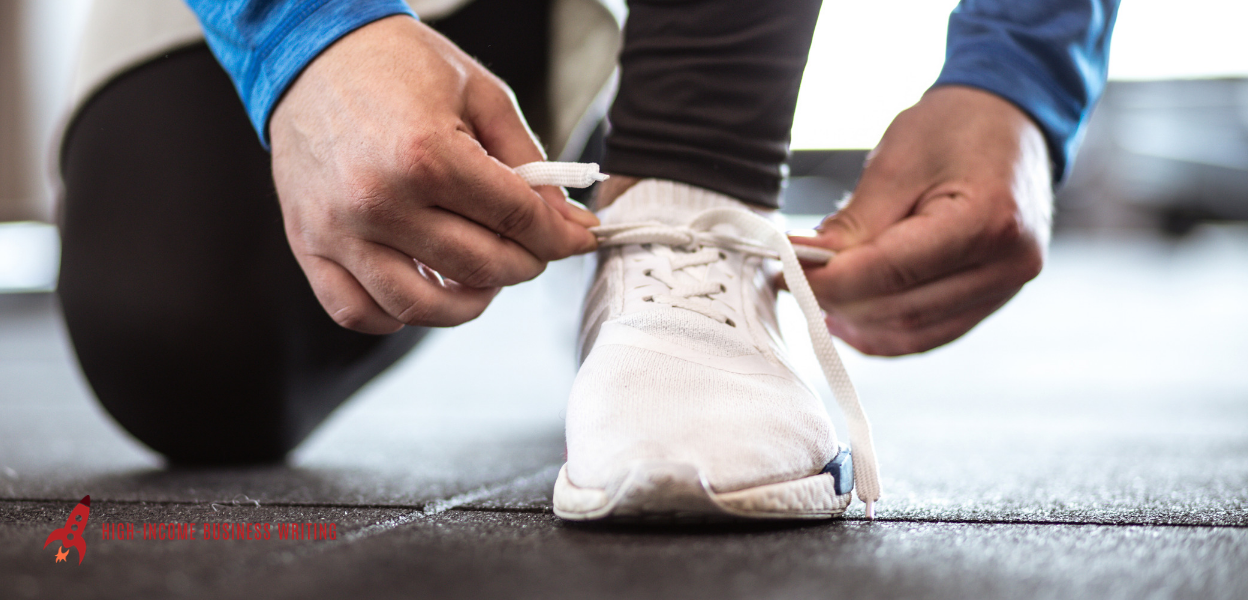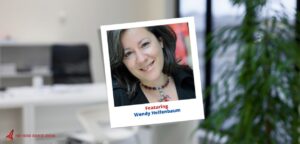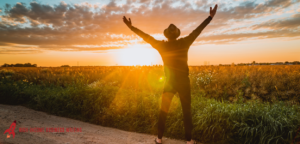You would think that having a flexible work schedule would lead to better physical health.
But the sad truth is that many work-at-home writers struggle to get and stay healthy.
A flexible schedule leads many of us to put everything ahead of physical fitness. Being so close to a fridge full of food is also a problem. And working at a desk for long hours can take a toll on the body.
In today’s episode, my guest Steve Beck addresses this important issue.
Steve is a certified personal trainer. In this interview, he describes how to get started with a simple exercise program if you’re currently at “zero” … and how to build on your current fitness routine if you already have one.
He also provides strategies to turn fitness and healthy eating into a lifelong habit.
One quick but important note: Steve and I are not doctors or medical professionals. So consult with your doctor before starting or changing your exercise or nutrition program.
The notes that follow are a very basic, unedited summary of the show. There’s a lot more detail in the audio version. You can listen to the show using the audio player below. Or you can subscribe in iTunes to get this show delivered straight to the Podcasts app on your smart phone, tablet or iPod.


High-Income Business Writing with Ed Gandia
#196: Fitness for Freelancers—How to Get and Stay Physically Fit When You’re a Work-at-Home Professional
Tell us about yourself and what you do for a living
Steve’s fitness journey was always a gifted, athletic person. But at the age of 16, he started working out more formally and joined a gym.
About nine years ago, he became more serious in his interest and got certified as a personal trainer. When he saw the important role that nutrition played for his clients, he got certified in that as well.
Today, he’s been coaching clients for the past eight years — while also holding a fulltime day job.
If we want to get healthy, how much of it depends on nutrition versus exercise?
It depends on many factors, such as lifestyle, genetics, underlying conditions, ability and willingness to change.
The short answer is that you can’t out-train a bad diet. Food is a pillar of our overall health, whether we’re exercising or not.
Your body is like a portfolio. If you invest in good solid stocks, you’ll have a net gain at the end of the day. If you invest in a bunch of junk, you might be okay. But it’s much more likely that you’ll have some issues at some point.
What’s a practical way to get started with exercise if we not currently doing anything?
If you’re starting at zero, you want to keep it simple. Taking two 10-minute walks a day is a great place to start. It gets you out of the office and helps your cardiovascular system.
If you’re starting at zero in your exercise regimen, begin by keeping it simple.
Eventually, you can add some low level strengthening to that. Things like push-ups, pull-ups and squats are great for joint mobility and posture.
Which resistance workouts should we start with?
Set a goal to do ten squats every hour, for example. You don’t have to go deep. Just go slow and steady.
Lots of people need corrective exercise in the upper body from sitting at a desk all day.
Stand up, hold arms above your head and stand tall for 10 seconds at a time every hour. Do that in combination with your squats.
Combine these with your twice-a-day walks. Don’t take your phone with you.
These exercises are low impact and high ROI if you do them consistently and with awareness.
Set reminders in your phone until these become a habit.
Reward yourself with a short YouTube video or article you want to read.
Is it better to exercise at home or go to a fitness facility?
It depends on what motivates you. Some of us enjoy getting out. Others find it a hassle.
You can set up a starter home “gym” for about $100.
Gyms can be motivating because you’re exercising with others. If you can find a friend to join you, that’s even better.
But the danger with some gyms is that you can get overwhelmed by the equipment or the “bro” culture.
Any other tips you recommend?
You have to hold yourself accountable and that requires developing discipline.
Steve has been working out consistently for 27 years. Even so, he doesn’t want to on some days. So he tells himself he can procrastinate tomorrow.
When you’re tempted to eat something unhealthy, remind yourself that it will only taste good for about 30 seconds. And you’ll feel horrible for the rest of the day. Often the anticipation is better than the actual payoff.
Tell us more about intermittent fasting
Steve generally eats only between 1:30 pm to 9:30 pm during weekdays. It’s an eight-hour eating window.
The benefits of having a shorter eating window is that it teaches you to distinguish between mental hunger and physical hunger. You might think you’re hungry in the morning. But by noon you recognize that you’re actually physically hungry.
Intermittent fasting resets your digestive system and has some advantages at the cellular level.
It also teaches you that you control what you eat.
We take food for granted in North America. If you deprive yourself for a little while, you regain your respect for food.
You also end up eating less because the eating window is shorter.
Where can people learn more about you?
Steve has worked with Ian Westermann of Essential Tennis to create fitness content.
https://www.essentialtennis.com
Essential Tennis YouTube channel
https://www.youtube.com/user/EssentialTennis
Ben Greenfield Fitness is another great resource
https://bengreenfieldfitness.com
Plus … whenever you’re ready, here are 4 ways I can help you grow your freelance business:
1. Grab a free copy of my book for ESTABLISHED writers/copywriters.
You’ll discover how to quickly and predictably reawaken dead leads, generate new client opportunities and convert not-yet-ready prospects into freelance writing clients. — Click Here
2. Download a free copy of my new book for writers who are NEW to freelancing.
I’ll show you the 3 things you need to do to get your business off the ground safely and land your first paying client faster. — Click Here
3. Join my implementation program and be a case study.
I’m putting together a new implementation group this month. If you’d like to work with me to grow your income quickly with better clients (and become one of my new success stories). Just email me at ed@b2blauncher.com and put “Case Study” in the subject line.
4. Get a 1:1 strategy call with me.
Are you a 6-figure writer who’s trying to earn more in less time with less stress? Let’s jump on a quick call and brainstorm some ideas for getting you there. Just email me at ed@b2blauncher.com and put “Brainstorm” in the subject line.






